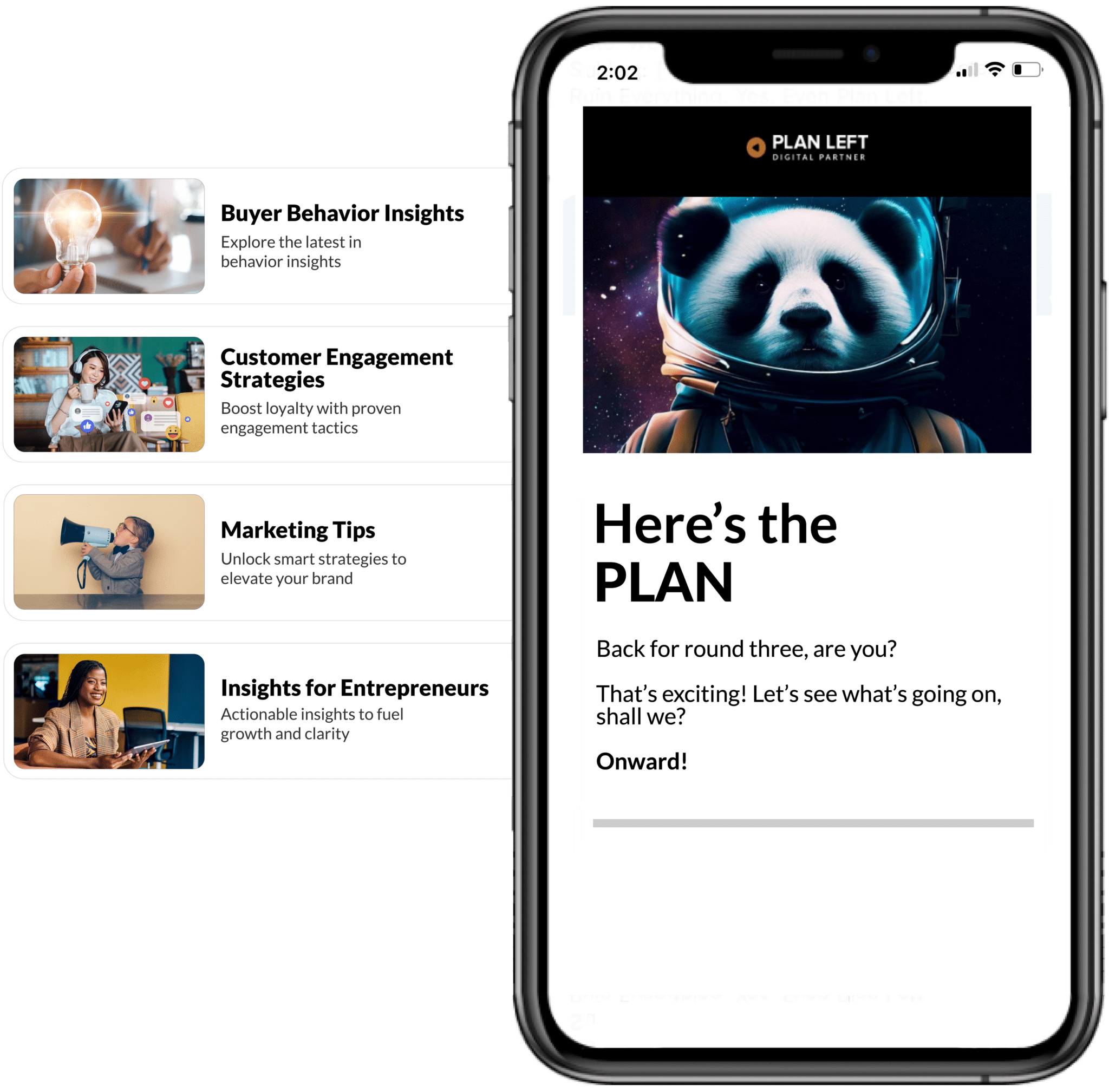
The Real ROI of Digital Marketing: 5 Metrics Beyond Clicks That Actually Matter
Your marketing agency just sent over this month’s report, and the numbers look impressive. Website traffic is up 40%. Social media impressions have doubled. Click-through rates are climbing. You should feel good about this, right?
Except there’s one problem: your revenue hasn’t budged, and you’re not entirely sure whether your marketing investment is actually working.
Why Most Marketing Metrics Are Lying to You
The digital marketing world has a measurement problem. Too many reports are filled with numbers that sound impressive but reveal nothing about whether marketing is growing your business. Understanding which metrics actually matter starts with recognizing which ones don’t.
The Vanity Metrics Trap
Vanity metrics are measurements that make you feel good without telling you anything meaningful about business performance. Clicks, impressions, page views, and social media followers fall into this category. These numbers can grow substantially while your business stagnates because they measure activity, not outcomes.
Consider a campaign that generates 50,000 impressions and 2,000 clicks. Those numbers feel substantial, but they’re meaningless without context. Did those clicks come from your target audience? Did anyone take action after clicking? Did a single one convert to a customer? Without answers to these questions, you’re celebrating activity while ignoring results.
The trap is seductive because vanity metrics are easy to improve and impressive to report. It’s far simpler to increase website traffic than to increase qualified leads. But businesses don’t grow on traffic. They grow on customers who pay money, and vanity metrics rarely indicate whether you’re acquiring them efficiently.
What “Good Numbers” Actually Mean for Your Business
Good numbers tell you whether your marketing investment is generating positive returns. They connect directly to revenue, reveal the efficiency of your customer acquisition process, and indicate whether your marketing strategy is sustainable as you scale.
A truly meaningful metric should answer at least one of these questions: Are we acquiring customers profitably? Are those customers valuable enough to justify our acquisition costs? Is our marketing getting more or less efficient over time?
If a metric doesn’t help answer these questions, it’s probably not worth the attention you’re giving it.
The 5 Marketing Metrics That Drive Real Business Growth
These five metrics cut through the noise and reveal what’s actually happening in your marketing. They’re harder to manipulate, directly tied to business outcomes, and essential for making strategic decisions about where to invest your marketing budget.
Metric 1: Customer Acquisition Cost (CAC)
Customer Acquisition Cost measures the total investment required to acquire a new customer. Calculate it by dividing all marketing and sales expenses by the number of new customers acquired in that period. If you spent $50,000 on marketing and sales last quarter and acquired 25 customers, your CAC is $2,000.
This metric matters because it tells you the fundamental economics of your growth. A business spending $2,000 to acquire customers with a $500 lifetime value is on a path to failure, regardless of how impressive the website traffic looks. CAC reveals whether your growth is sustainable or whether you’re essentially buying revenue at a loss.
Track CAC over time to understand whether your marketing is becoming more or less efficient. Rising CAC suggests your market is saturating, your messaging is weakening, or your targeting needs refinement. Declining CAC indicates improving efficiency and potentially untapped growth opportunity.
Metric 2: Customer Lifetime Value (CLV)
Customer Lifetime Value estimates the total revenue a customer will generate throughout their relationship with your business. Calculate it by multiplying average purchase value by purchase frequency and customer lifespan. A customer who spends $1,000 annually for five years has a CLV of $5,000.
CLV provides the crucial context for evaluating CAC. The relationship between these two metrics determines whether your business model is viable. A healthy business typically maintains a CLV to CAC ratio of at least 3:1, meaning customers generate three times what you spent to acquire them.
This metric also guides strategic decisions about customer segmentation and targeting. If analysis reveals that customers from certain channels or demographics have significantly higher CLV, you can shift marketing investment toward acquiring more of them, even if their CAC is higher than average.
Metric 3: Lead-to-Customer Conversion Rate
This metric tracks the percentage of leads that ultimately become paying customers. If you generate 100 leads and 5 become customers, your lead-to-customer conversion rate is 5%. This measurement reveals how effectively your sales process turns interest into revenue.
A declining conversion rate, even with steady lead volume, indicates problems in your sales process, lead quality, or the alignment between marketing promises and actual product delivery. Conversely, an improving conversion rate suggests your lead quality is increasing or your sales process is becoming more effective.
This metric also helps you calculate the true value of marketing activities. If you know your conversion rate and average customer value, you can determine exactly how much a lead is worth, which allows you to make informed decisions about how much to spend acquiring them.
Metric 4: Marketing Qualified Lead (MQL) to Sales Qualified Lead (SQL) Ratio
The MQL to SQL ratio measures what percentage of marketing-generated leads meet the criteria for sales engagement. If marketing delivers 200 MQLs and 50 become SQLs, your ratio is 25%. This metric reveals the alignment between marketing and sales and the quality of leads marketing generates.
A low MQL to SQL ratio suggests marketing is generating volume without quality, targeting the wrong audience, or setting inappropriate qualification criteria. A high ratio indicates strong alignment and suggests that marketing understands what makes a lead valuable to sales.
This measurement prevents the common dysfunction where marketing celebrates lead generation numbers while sales complains about lead quality. When both teams focus on the MQL to SQL ratio, they’re incentivized to collaborate on improving lead quality rather than arguing about quantity.
Metric 5: Return on Ad Spend (ROAS) and Marketing ROI
Return on Ad Spend measures revenue generated per dollar spent on advertising. If you spend $10,000 on ads and generate $40,000 in revenue from those ads, your ROAS is 4:1. Marketing ROI takes a broader view, comparing total marketing investment to the revenue it generates.
These metrics answer the fundamental question every business leader needs answered: Is marketing investment generating positive returns? A ROAS below 1:1 means you’re losing money on every ad dollar spent. Anything above 1:1 is generating positive returns, though the ratio needed for sustainability depends on your margins and business model.
Track ROAS by channel and campaign to understand where your marketing budget is most effective. This granular view allows you to shift investment away from underperforming channels toward those generating the strongest returns, continuously improving overall marketing efficiency.
Building Your Marketing Measurement Framework
Having the right metrics is only valuable if you have systems to track them accurately and use them to drive decisions. Building an effective measurement framework requires connecting marketing activity to business outcomes and establishing benchmarks that guide strategy.
Connecting Marketing Metrics to Revenue
The connection between marketing metrics and revenue should be explicit and trackable. This requires implementing systems that follow leads through your entire funnel, from initial awareness through closed sale. Most businesses have visibility into the top of the funnel (traffic, leads) and the bottom (closed deals) but lose sight of leads in the middle, making it impossible to understand what’s working.
Invest in tools and processes that maintain this visibility. Marketing automation platforms, CRM systems, and analytics tools should work together to track the complete customer journey. When a deal closes, you should be able to trace it back to the specific marketing touchpoint that initiated the relationship.
This complete visibility allows you to make strategic decisions based on data rather than assumptions. You’ll know which content assets generate the highest-quality leads, which campaigns drive the most revenue, and where prospects typically get stuck in your funnel.
Setting Benchmarks and Goals for Your Business
Generic industry benchmarks provide starting points, but your goals should reflect your specific business model, market position, and growth stage. A startup in customer acquisition mode might accept a higher CAC than an established company optimizing for profitability. A business with high customer lifetime value can sustain higher acquisition costs than one with low-value transactions.
Start by establishing baseline measurements for each key metric. Track them consistently for at least a quarter to understand your current performance. Then set improvement goals based on what’s realistic for your business and what’s required to hit your revenue targets.
Review these metrics regularly with your team, but avoid overreacting to short-term fluctuations. Marketing metrics should inform strategic decisions, not drive panic over weekly variations. Focus on trends over time rather than individual data points.
From Data to Decisions: Using Metrics to Optimize Your Marketing
Collecting metrics accomplishes nothing if you don’t use them to improve performance. The real value comes from analyzing what the data reveals and making strategic adjustments based on those insights.
Red Flags in Your Marketing Metrics
Certain patterns in your metrics should trigger immediate attention. Rising CAC combined with flat or declining CLV indicates deteriorating unit economics that threaten business sustainability. A declining MQL to SQL ratio suggests growing misalignment between marketing and sales or weakening lead quality. Flat conversion rates despite increasing lead volume means you’re generating activity without improving outcomes.
Watch for metrics moving in opposite directions. Traffic increasing while conversions decline suggests problems with lead quality, targeting, or website experience. Rising ROAS on ads but declining overall revenue might indicate you’re optimizing a channel that’s too small to move the business needle.
These red flags don’t necessarily mean your marketing is failing, but they indicate areas requiring strategic attention and adjustment. The sooner you identify these patterns, the less time and money you’ll waste on ineffective approaches.
Explore Latest Posts
The Real ROI of Digital Marketing: 5 Metrics Beyond Clicks That Actually Matter Your marketing agency just sent over this ... read more
January 15, 2026
How to Know When DIY Marketing Is Costing You More Than An Agency Would Every founder starts somewhere, and for ... read more
January 13, 2026
5 Signs Your Business Is Ready to Own Its Marketing (Without an Agency) The default assumption in business is that ... read more
December 31, 2025
Essential Strategies for Entrepreneurs
Get Actionable Business Insights & Marketing Tips
Our newsletter delivers real-world strategies from entrepreneurs who’ve been exactly where you are.
Sign up now for:
- Actionable growth strategies that work
- Insider tactics for attracting top talent
- Real-world case studies from successful founders
- Emerging tech trends that drive innovation
- Pragmatic marketing approaches for visionary leaders



